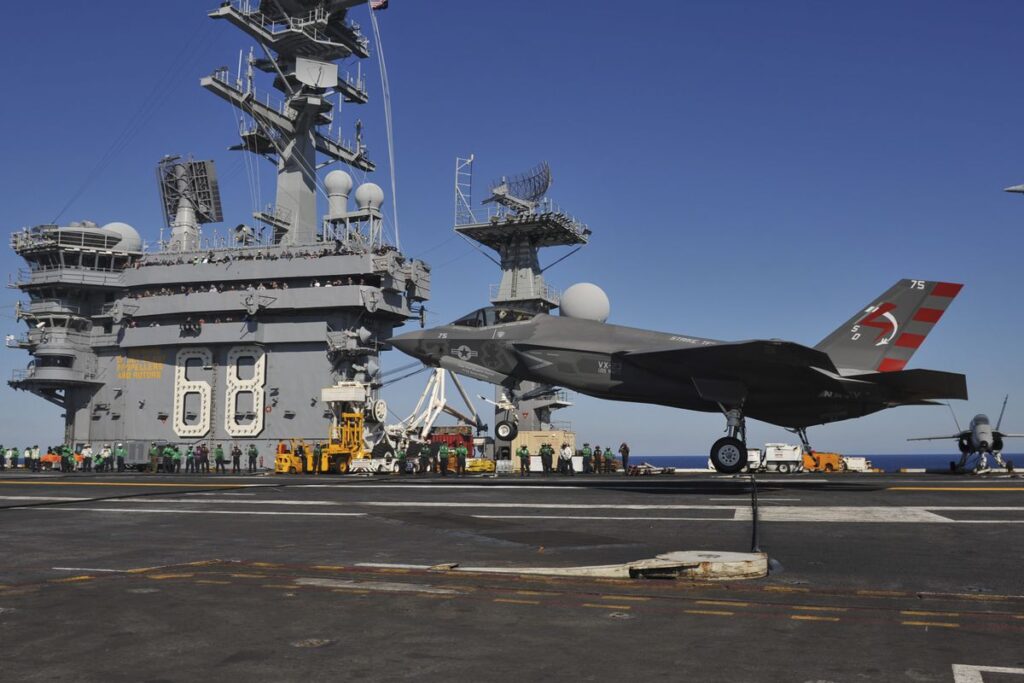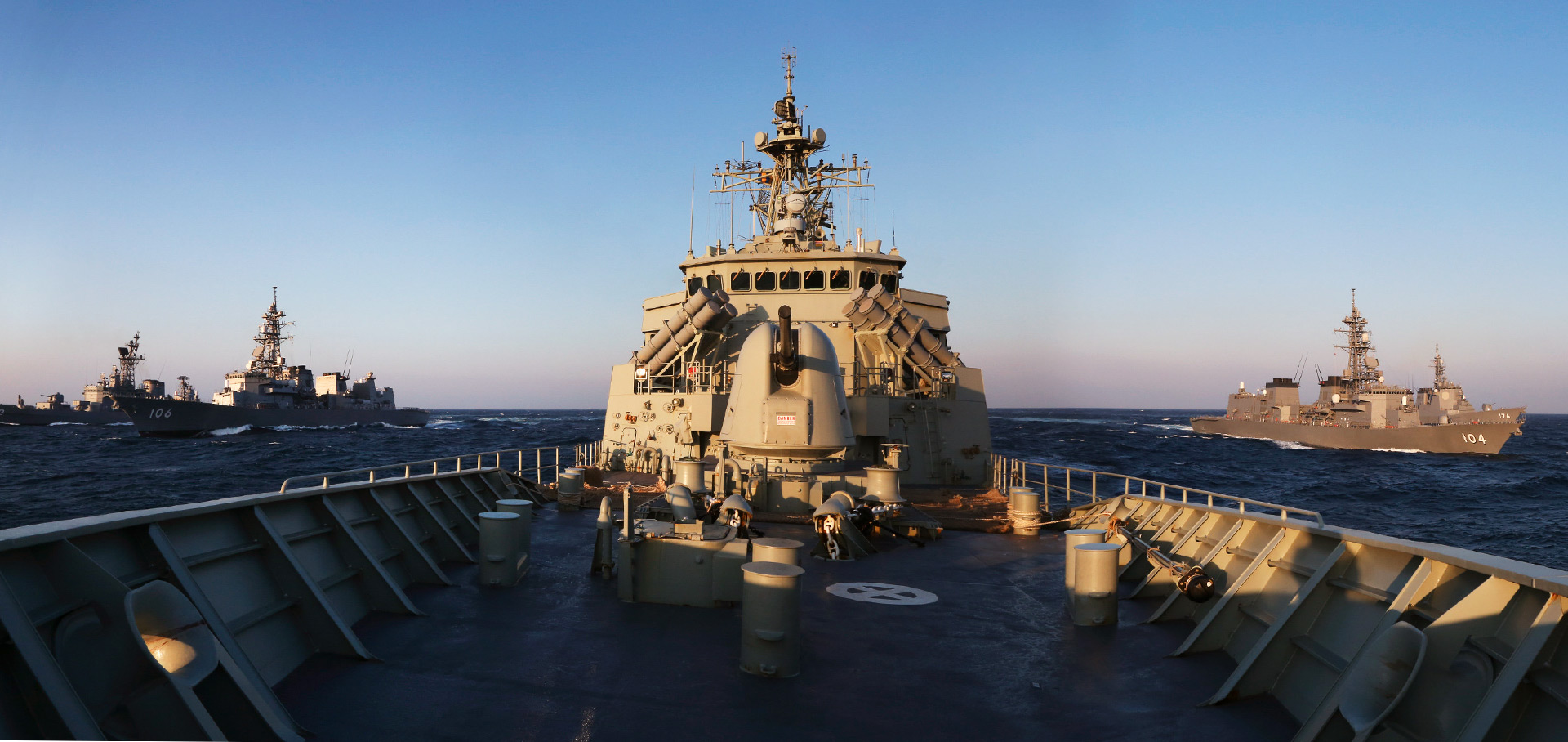The US Navy is the world’s most powerful seagoing force and has amassed a long list of achievements through its numerous naval operations. Together We Served, the internet’s largest repository of personal military history, honors those sailors who have contributed to its successes, from naval operations in World War II to the Global War on Terrorism.

Historic Naval Operations
While there were plenty of battles in the Pacific Theater that counted as prominent victories: The Battle of Midway, Operation Vengeance, or the Battle of Okinawa, one victory that will stand in the history of US naval operations is the Battle of Leyte Gulf. Over 200,000 naval personnel were involved in this battle, which, according to both sides’ representatives, spelled the beginning of the end for Imperial Japan.
The American land forces were landing on the Philippine island of Leyte in October 1944, defended by the 3rd and 7th Fleets. However, three Japanese forces converged on the anticipated invasion: Northern, Southern, and Center Force. The Northern Force, mainly composed of carriers, lured away from the 3rd Fleet, exposing the 7th Fleet and the landing ships on the Leyte beaches. However, the Northern Force was hugely outnumbered by the 3rd Fleet, with very little actual airpower, and suffered significant losses. The Center Force was dogged by American submarines and air support, losing multiple ships but outmaneuvering the opposing fleets and making a run at the Leyte landing parties via the San Bernardino Strait. Meanwhile, the Southern Force approached the Surigao Strait, intending to form up with the Center Force to bring maximum firepower to bear on the landing forces. However, the 7th Fleet Support Force was lying in wait, and fully half of the Southern Force was sunk that day, with most of the rest taken out in later actions around the Leyte area.
However, the Center Force was still mostly intact, and the Leyte landing force was only lightly guarded by escort carriers and a handful of destroyers. However, a combination of luck and valor on the parts of the defenders meant that the Japanese were disoriented by the ferocity of the attack, as well as without air cover against what little airpower the escort carriers could bring to bear. They withdrew, rather than get caught between what they perceived as the rest of the 7th Fleet and the 3rd Fleet they expected to come in from the north. While they were mistaken in this, the massive damage the Northern and Southern Forces sustained, along with the cumulative damage the Center Force received from the submarine assault, air attacks, and spirited defense by the escort carriers and their support, effectively brought an end to the Imperial Japanese Navy’s contesting of the Allied control of the Pacific. This, in turn, meant that, along with the earlier crippling of Japanese airpower, the war was now definitely turned in favor of the Allies. American casualties were around 3,000, with 6 vessels lost, while the Japanese suffered losses of over 12,000, and 28 vessels lost.

On a smaller scale, another pivotal operation was during the War of 1812: the Battle of Lake Erie. Fought between the US Navy and the British Royal Navy, the British had established control of the lake immediately after the war began. This control had contributed to the loss of Detroit. After a tip-off, the Secretary of the Navy ordered a new shipbuilding facility be built at Erie in Pennsylvania for gunboats. The British had superior ships but few guns and lacked experienced sailors to man them. The Americans were led by a very young senior officer, 27-year-old Master Commandant Oliver Hazard Perry. He attempted to close with the British forces quickly but sustained immense casualties and heavy damage to his flagship, the Lawrence, resituating himself on the only other American ship of any size, the Niagara. Meanwhile, the regular fire from the smaller American ships was steadily bombarding the less numerous Royal Navy ships and taking a heavy toll on their senior officers. The British flagship, the Detroit, was the most formidable vessel in the battle but was caught in a daring broadside by the Niagara and became entangled with Queen Charlotte, another British ship. Both surrendered, as did the other British ships when they were outrun by American pursuers. This victory helped the Americans protect the Niagara peninsula and represented the first unqualified victory over the Royal Navy, widely considered at the time to be the world’s finest.
Chief of Naval Operations
In modern times, the Chief of Naval Operations (CNO) office is an administrative position and not actually responsible for Navy operations (though the role is appointed as a four-star admiral). That power rests with the various combatant commanders, who report to the Secretary of Defense. The CNO is a member of the Joint Chiefs of Staff, alongside the
- Chief of Staff of the Army
- Commandant of the Marine Corps
- Chief of Staff of the Air Force
- Chief of Space Operations
- Chief of the National Guard Bureau
- Chairman of the Joint Chiefs of Staff
- Vice-Chairman of the Joint Chiefs of Staff
Navy Operations and Together We Served
Together We Served offers all US veterans the opportunity to join its 2-million strong community. Enter your service record into your profile: ships, tours of duty, operations, medal ribbons, photos, and more. Find old friends from your service, or share your virtual shadow box with your family. If you served, join your shipmates at https://togetherweserved.com today!

0 Comments